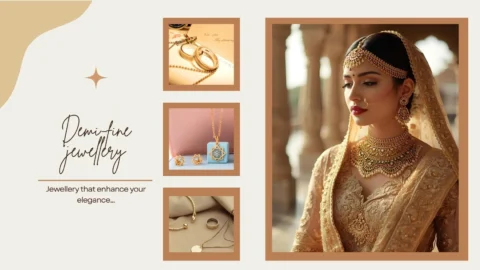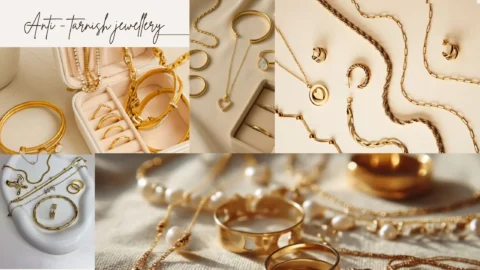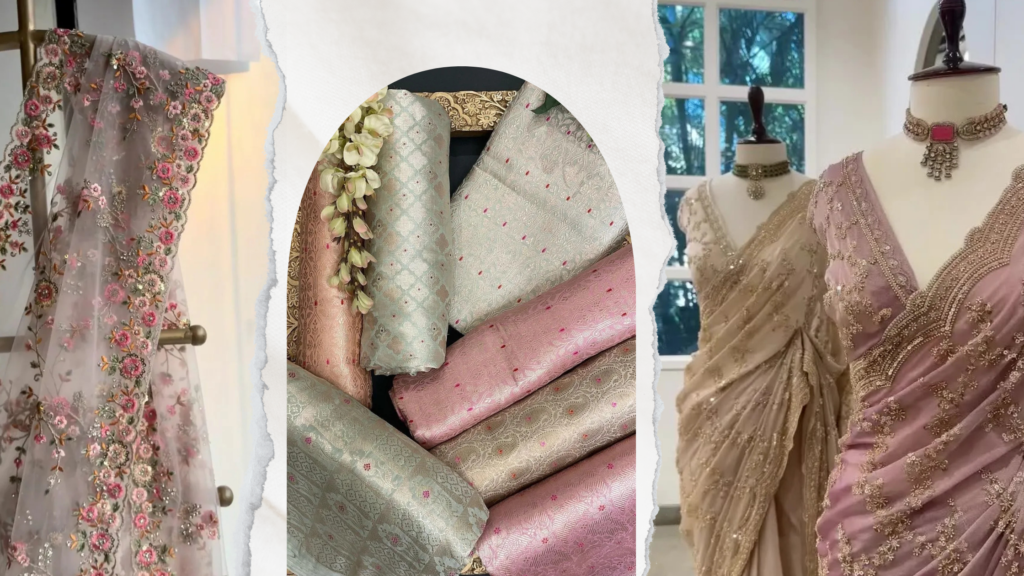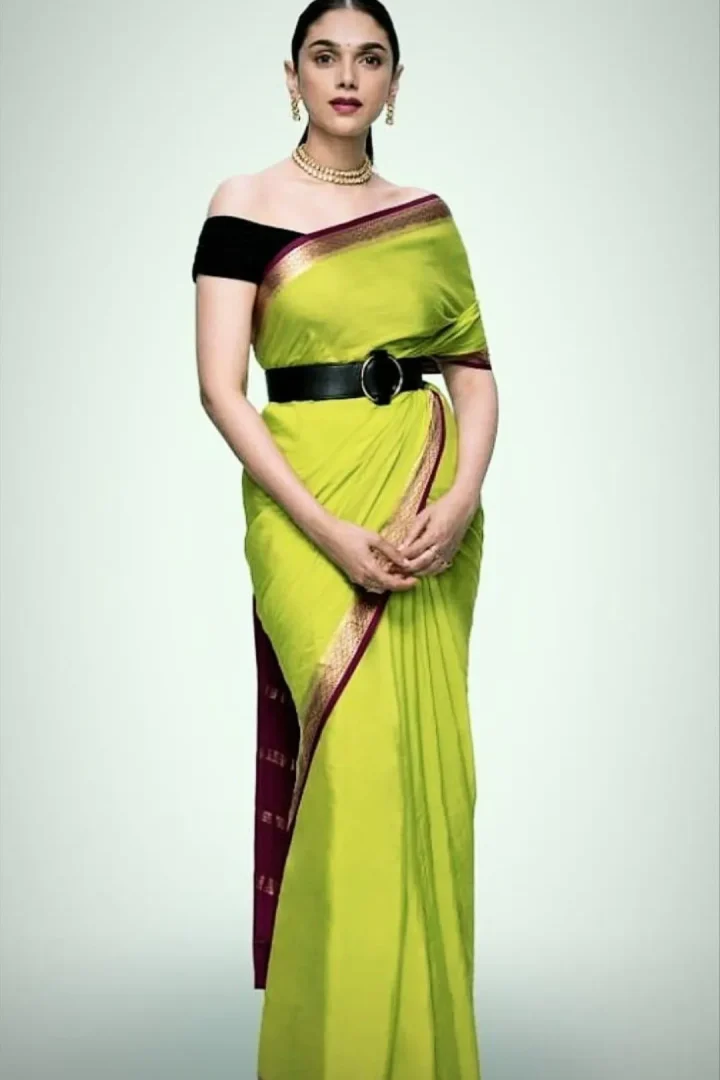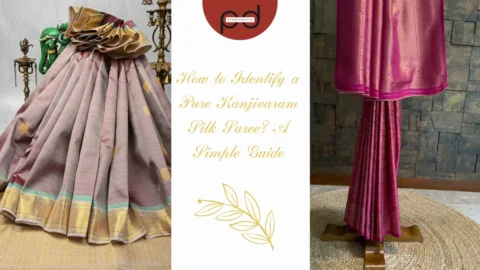INTRODUCTION
- The types of saree material are essential for creating your look, feel, and elegance in this classic Indian style. Sarees represent an ageless symbol of grace in Indian tradition and South Asian culture.
- Fabric is one of the many indications defining a saree; however, it is arguably the most important because it indicates how the saree falls, the level of comfort, and the overall aesthetics of the saree.
- You can see how the right type of fabric can change the overall aesthetics of this iconic form of clothing. This guide covers different types of saree material, their textures and regional relevance, price ranges, and how designer and celebrity sarees specifically are changing and being redefined via modern trends.
Choosing the perfect types of saree material.
5 Key Criteria for smart selection
1. Popularity and Demand
We study trends and examine which materials are trending in 2025 and which materials and fabrics are in demand by designers and buyers this year.
Fabrics like organza, tissue silk, and handloom cottons are featured in both traditional and modern designs.
2. Occasion and Suitability
3. Comfort and Drape
4. Designer and Trend Relevance
Fashion is constantly changing and designers are always finding new ways to reinterpret traditional fabrics.
We will provide examples of how different materials are used in designer collections, wedding sarees, and others that are hot emerging trends for the year.
5. Price and Affordability
There is a large range of prices for saree fabrics, and we will provide indicators as to how you can assess where the prices fit into your affordability and where it can be worth the extra investment.
Types of Saree Material
If you‘d like a thorough comparison of different types of saree material and suitability for different occasions, check out this Gulabo.
1. Cotton
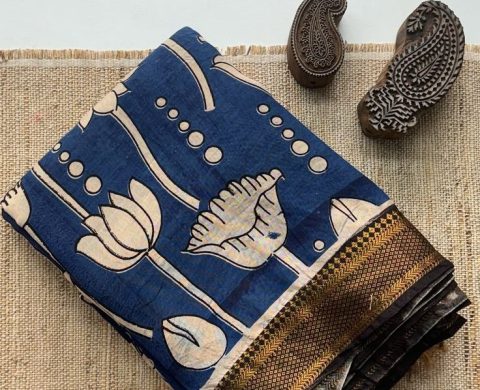
- Region/Climate: Ideal for hot and humid regions like the South & the West of India.
- Body Type: Suitable for all body types too, but especially comfortable for daily wear.
2. Silk
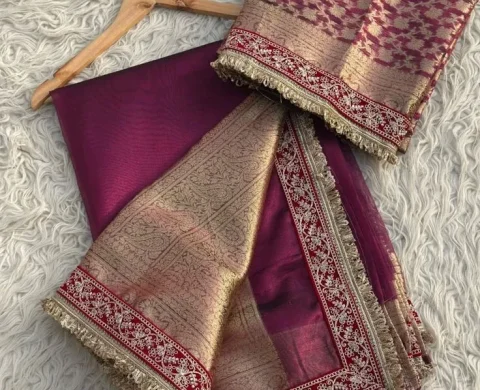
- Region/Climate: Best used for weddings and festivals; specifically ideal for cooler climates.
- Body Type: Silk sarees generally look good on slim to medium body frames, as they have a structured drape.
3. Georgette
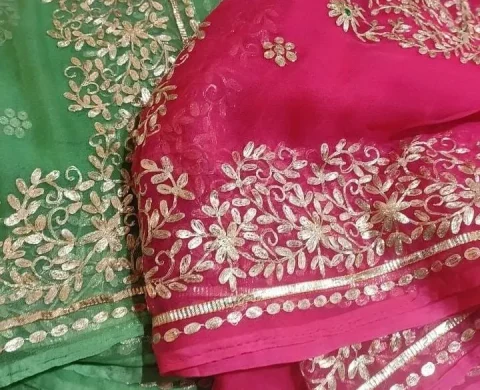
- Region/Climate: All-weather.
- Body Type: Curvy and plus-size women will love this fabric; it has a slimming effect!
4. Chiffon
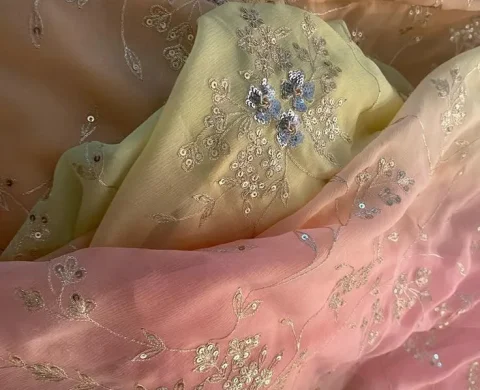
- Region/Climate: Summer wear and weekends.
- Body Type: Best for petite and slim bodies, as it follows your curves.
5. Linen
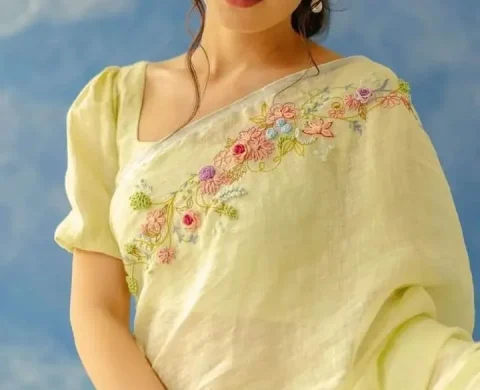
- Region/Climate: Suitable for hot and humid regions and climates.
- Body Type: Suitable for all body types, especially suitable for office professionals.
6. Organza
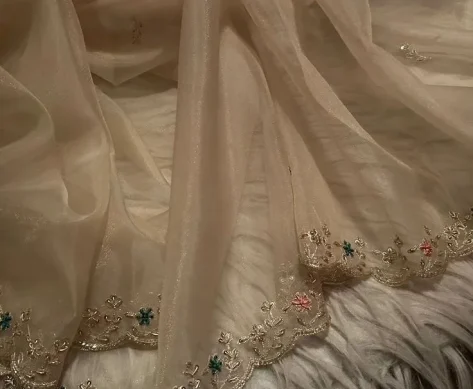
- Region/Weather: Use as festive wear in moderate weather.
- Body Type: Suitable for all body types.
7. Velvet
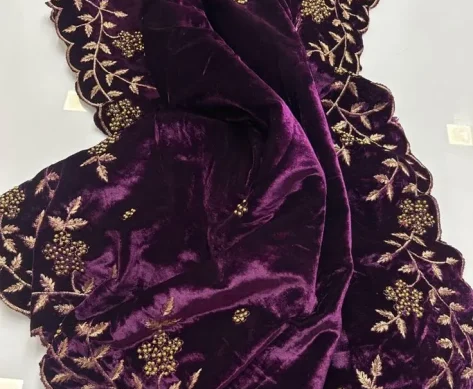
- Region/Climate: Best for winter weddings or evening events.
- Body Type: All body types with a slimming effect; best for tall and curvy non–straight sizes.
8. Tissue
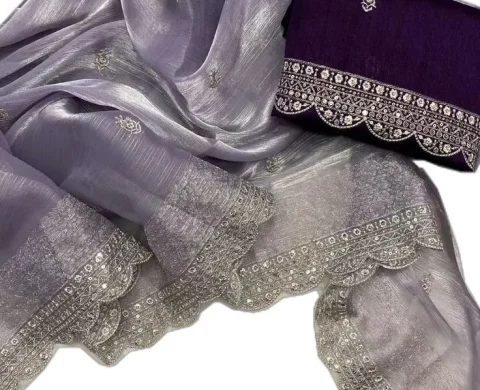
Description & Texture:
Shiny, sheer fabric with a crisp feel. Usually intertwined with silk or zari.
Best suited for:
- Region/Climate: Good for festive occasions in moderate climates.
- Body Type: Looks great for slim to medium frames.
9. Bhadhani

- Region/Climate: Great for festive wear for hot climates and weddings.
- Body Type: Suitable for all body types, makes the whole look vibrant.
10. Leheriya
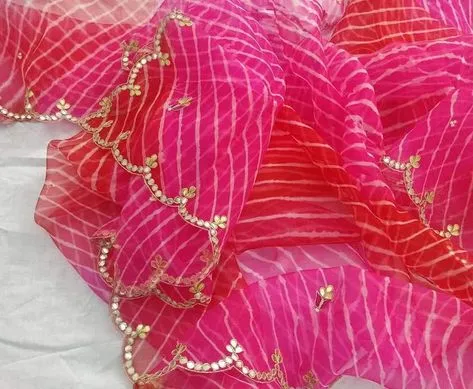
Description and Texture:
Rajasthani hand-dye art with wavelike striped motifs. Lightweight and vibrant.
Best suited for:
- Region/Climate: Best suited for hot and festive climates.
- Body Type: Universally flattering.
Best saree material for Weddings
When it comes to weddings, sarees are more than just a traditional outfit—they represent grace, heritage, and that quintessential style. It doesn‘t matter if you are the bride, bridesmaid, or guest, but selecting the right saree fabric will give you that added elegance.
In this blog, we highlight the best types of saree material for weddings, including our top picks, designer favorites, and what you should keep in mind before making a purchase.
1. Banarasi Silk
A must for any proper traditional Indian wedding. Banarasi is known for the intricate zari work, and feels luxurious.
Best for: brides, family members
Why we love it: Luxurious, traditional, bold
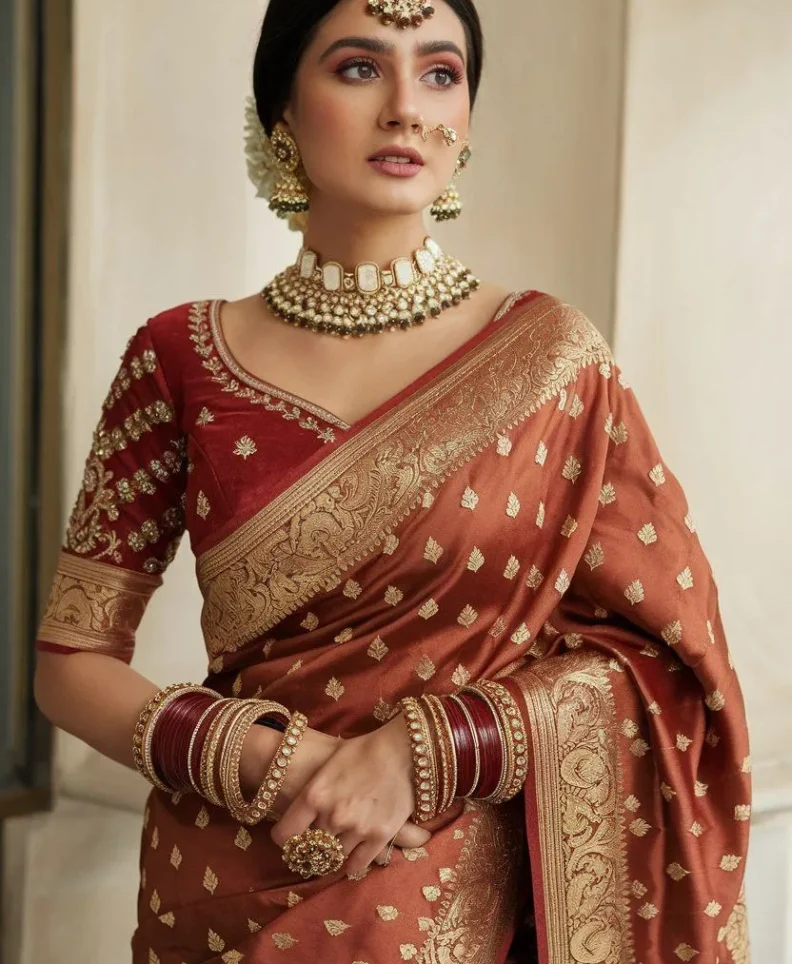
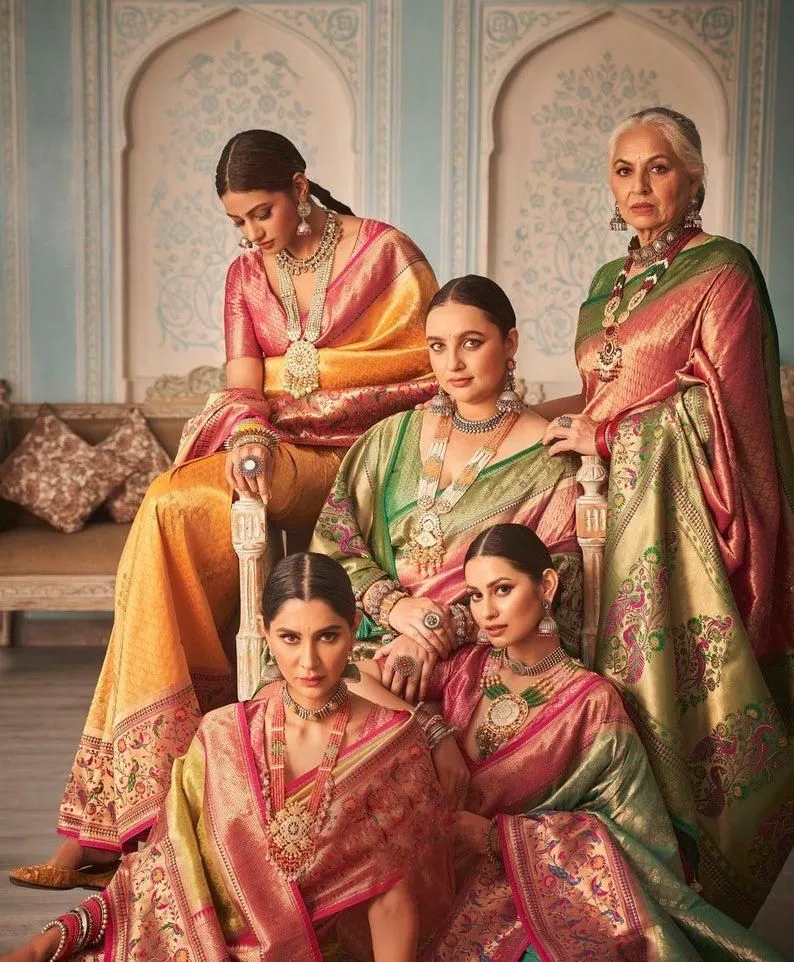
2. Kanjivaram Silk
Heavy and traditional, Kanjivaram silk is a classic from South India. Rich in texture, rich in colors, rich in tradition.
Best for: brides, especially in a South Indian wedding
Why we love it: heavy drape, gold thread work, can become heirlooms
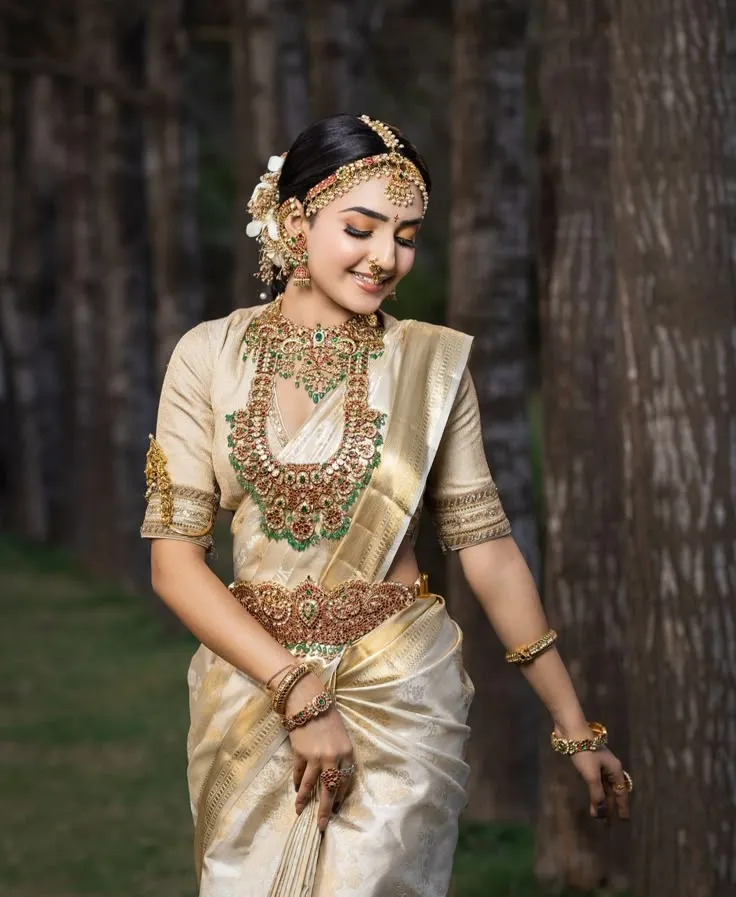
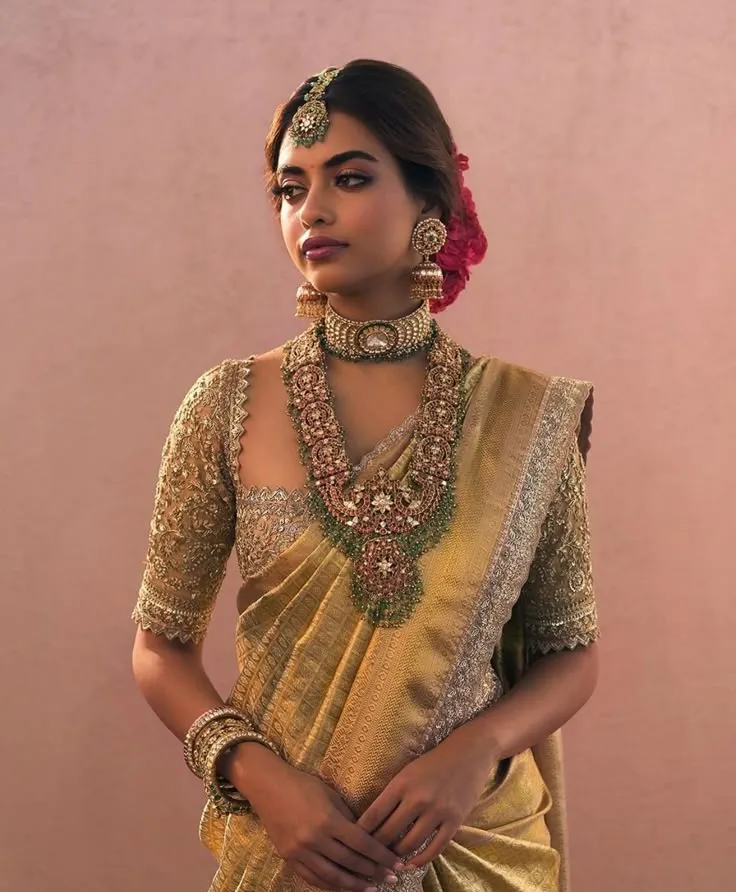
3. Georgette
Soft, flowy, and versatile fabric makes for event dresses for a modern wedding.
Best for: sangeets, cocktails, receptions
Why we love it: lightweight, flows, and easy to move in
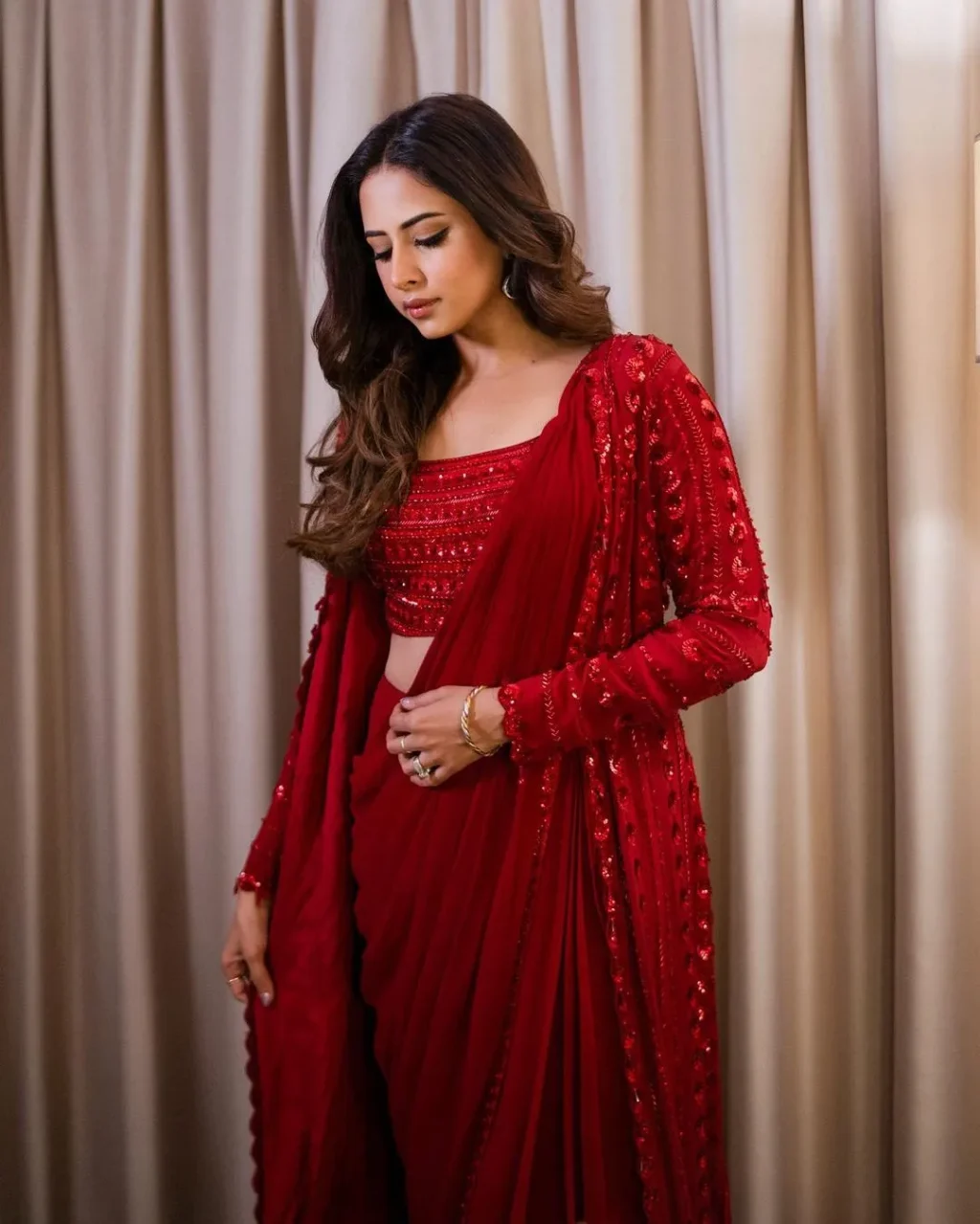
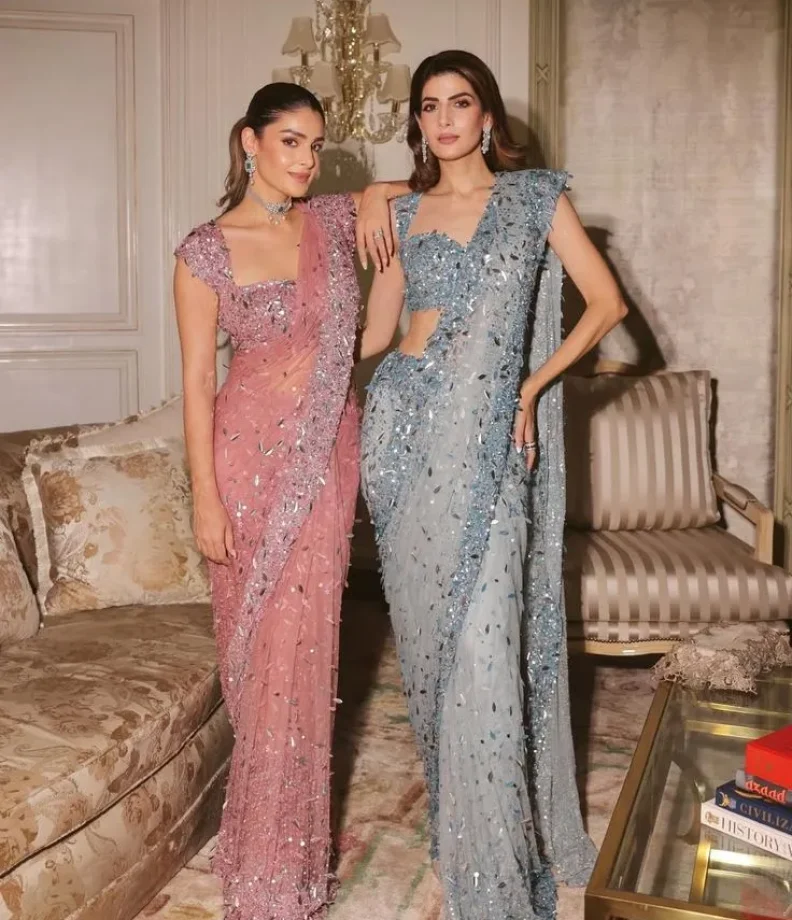
4. Chiffon
A sheer, elegant choice for the lightest of looks.
Best for: Mehendi and engagement functions.
Why we love it: Soft drape suits pastel shades and effortless elegance.
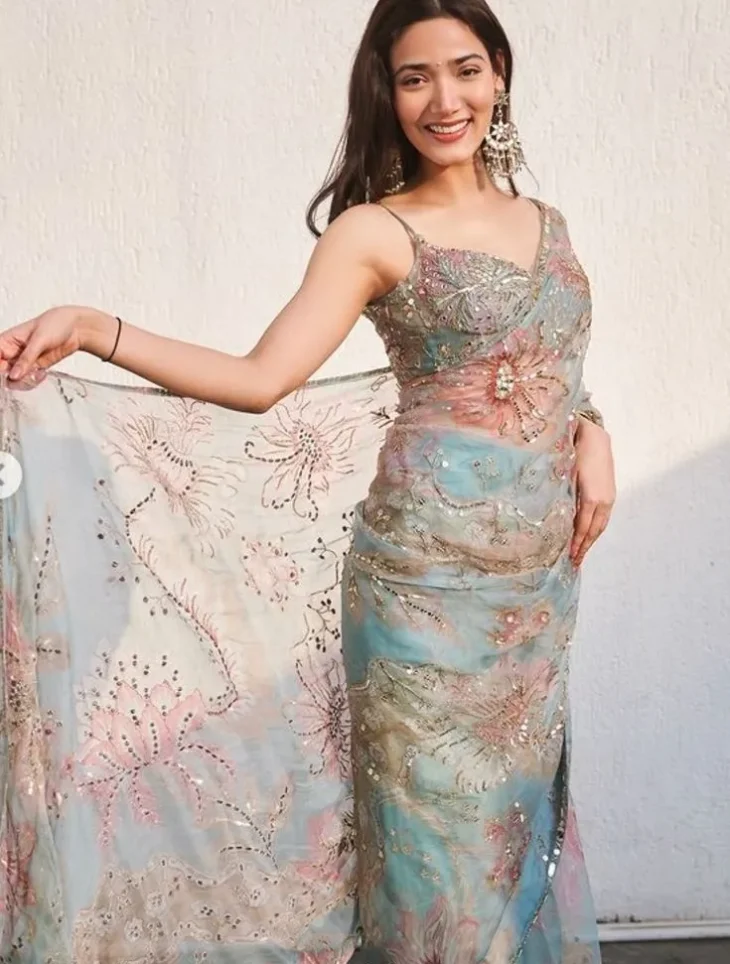
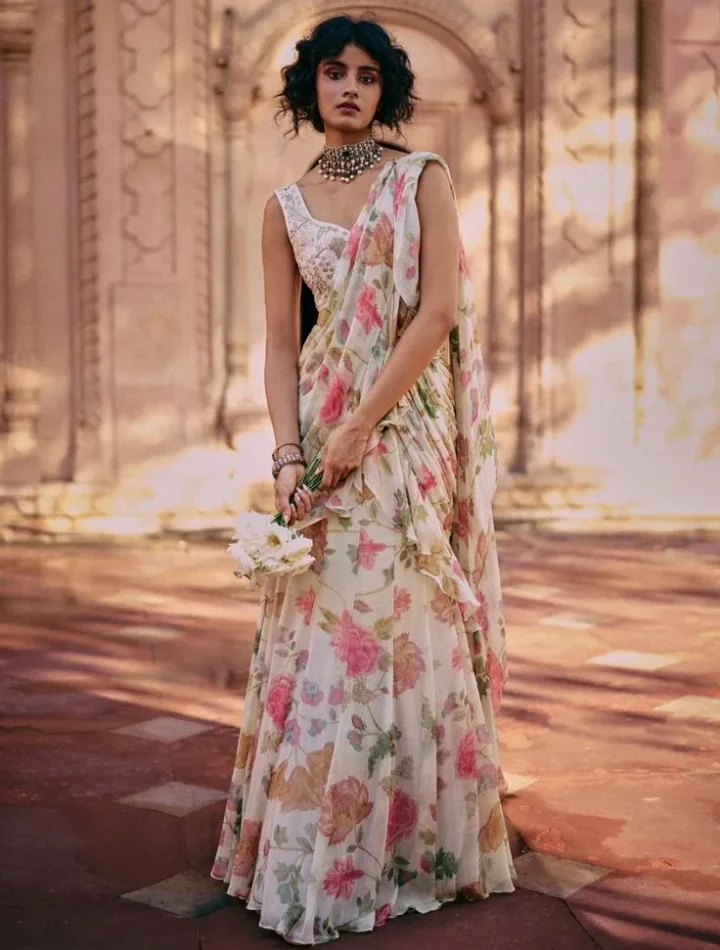
5. Organza
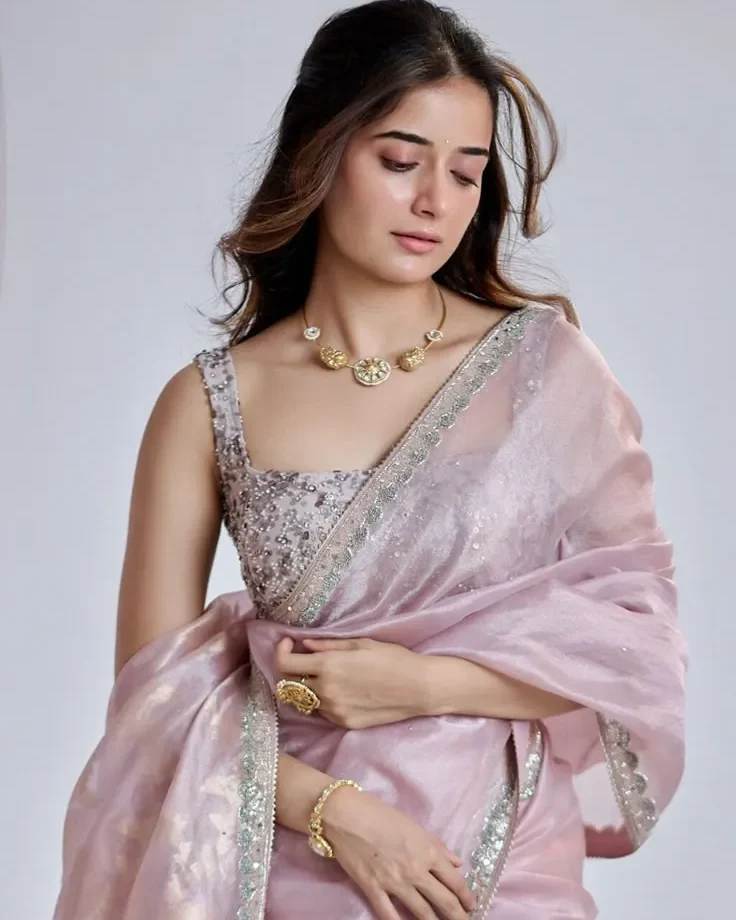
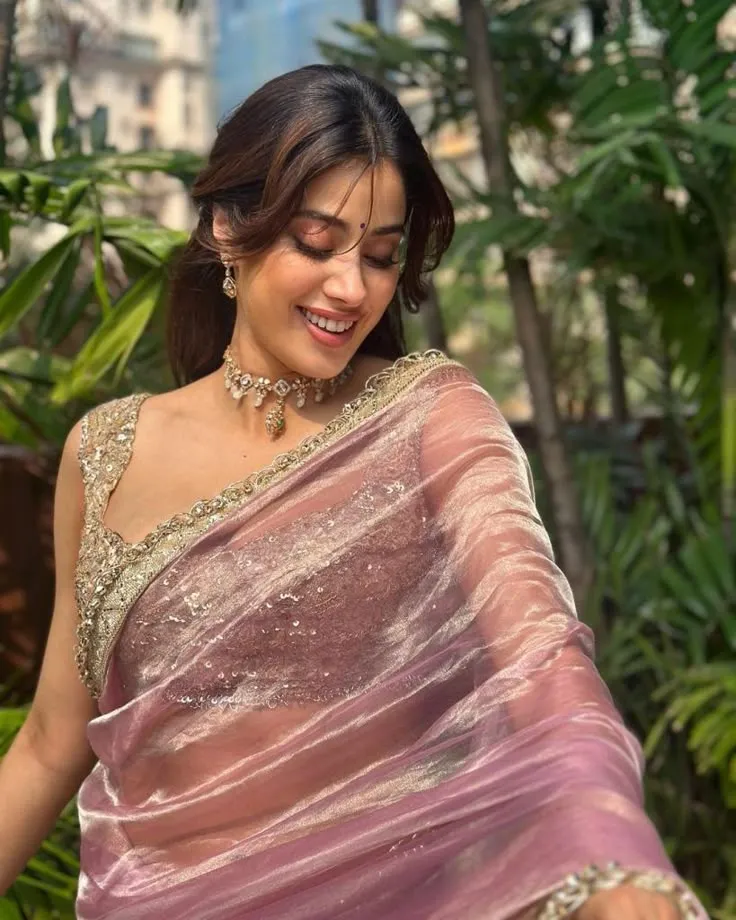
Trending Saree Colors 2025
Here are colorful images displaying some of the trending saree colors of 2025—from pastels and metallics to earthy tones and jewel tones.
Discover more—check this out
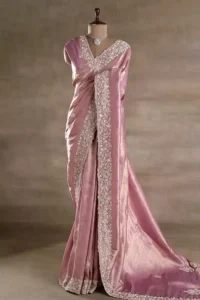
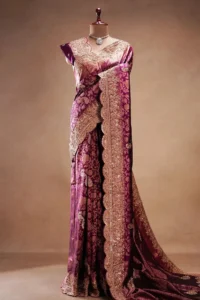
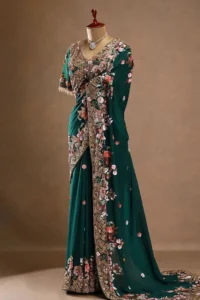
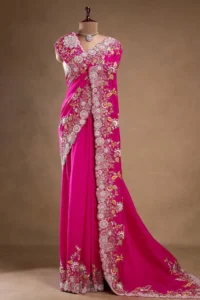
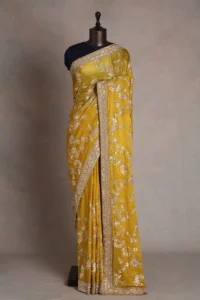
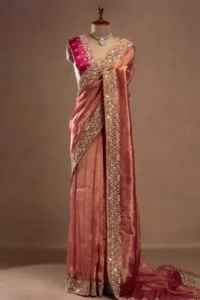
Innovative Drape Ideas
1. Belted Drape
Use a statement belt to hold the pallu at the waist.
It creates the shape and adds some modern flair.
Adapts easily to casual or festive occasions.
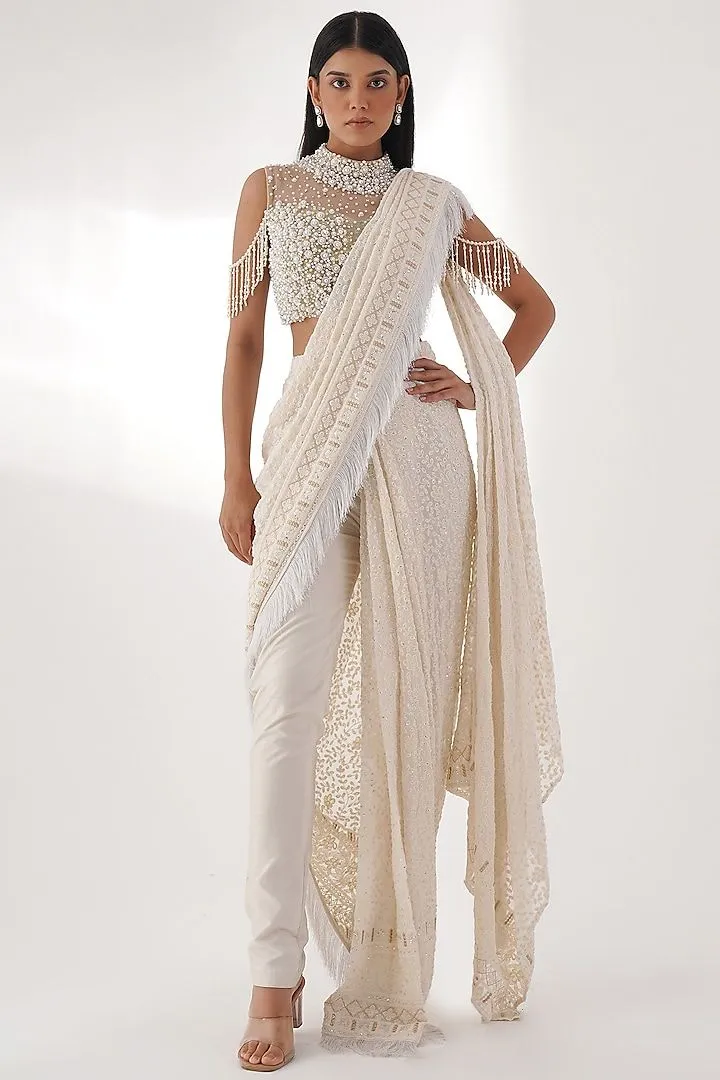
2. Pant -Style Drape
Consider instead of a typical petticoat, wearing pants or leggings under the saree.
Provides comfort and ease while being stylish.
Best worn for cocktail parties and office use.

3. Pre stitched Drapes
Designer drapes where the pallu was actually pre-stitched.
Super easy to wear and inherently glamorous.
Best to wear for receptions or red-carpet events.
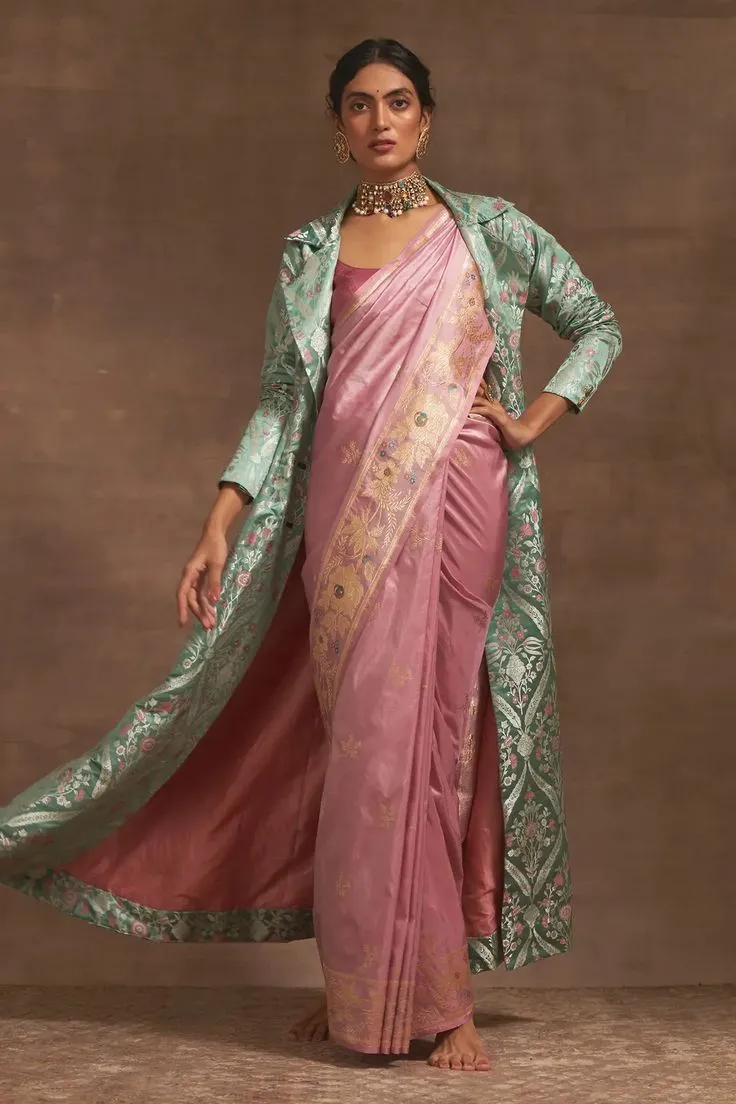
4. Jacket saree Drape
Layer a structured jacket or shrug over the saree.
Great option for corporate events and winter weddings.
Shows great potential as a power dressing trend in 2025!
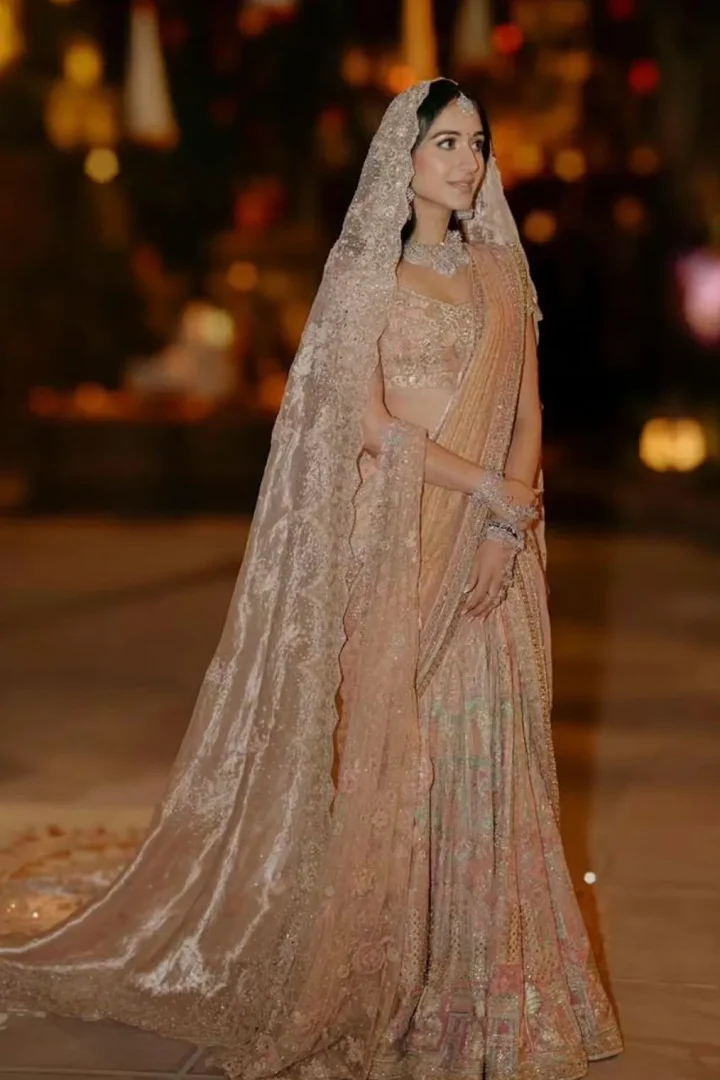
5. Trail Drape
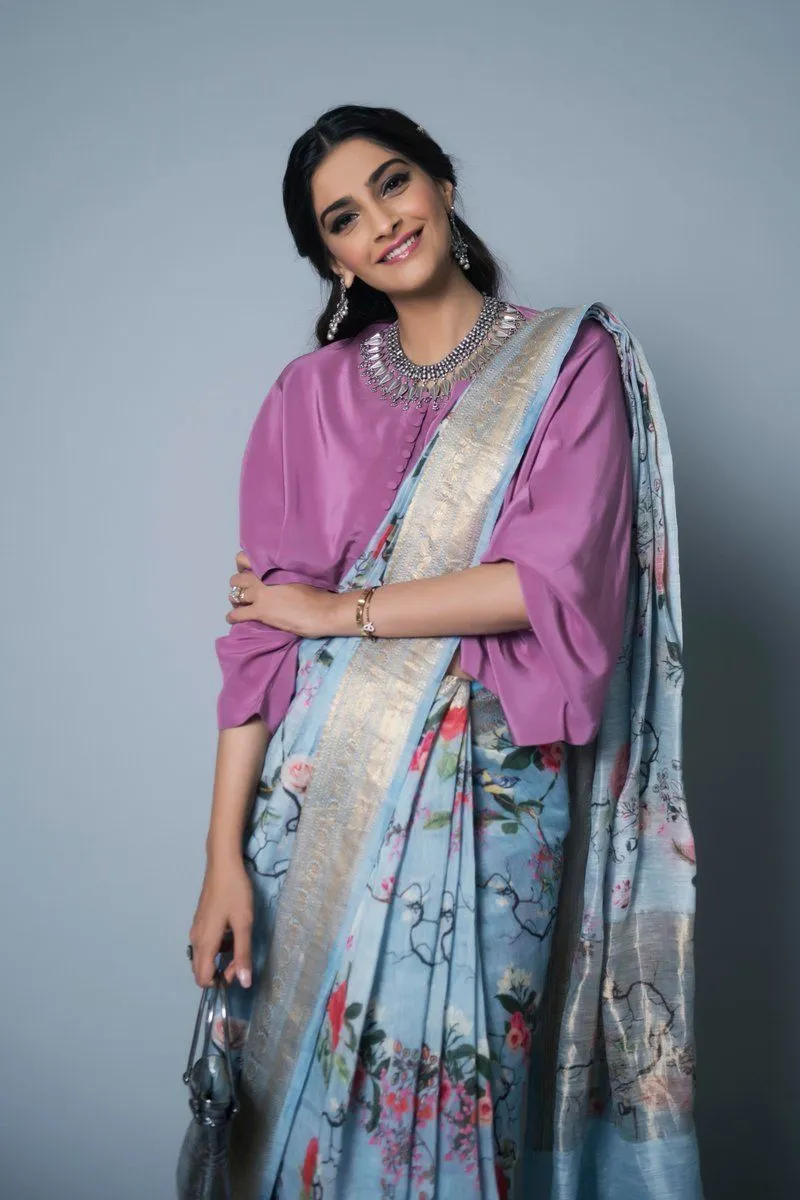
6. Saree with Shirt
Caring for different saree materials
Sarees are more than apparel; they are part of a legacy, elegance, and expression of personal style. Each saree material requires its own kind of care. Below are steps on how you can keep your sarees looking fresh and beautiful for years to come.
Washing cares
1. Cotton Sarees
- Do's:
- Soak in cold salt water separately for the first wash to lock in colors.
- Use a mild detergent and wash by hand gently.
- Don'ts:
- Don‘t wash with other garments, especially in the first few washes.
- Don‘t dry in direct sunlight, colors fade quickly.
2. Silk Sarees
- Do's:
Dry clean pure silk sarees to maintain their texture and luster.
If hand washing soft silk or silk blends at home, use a detergent safe for silk.
- Don'ts;
- Never machine wash pure silk sarees.
- Don‘t use hot water, or rub it vigorously — it will damage the sheen of silk and the texture.
3. Chiffon/Georgette Sarees
- Do's:
- Using cold water or detergent is appropriate.
- Gently squeeze excess water — do not wring
- Don'ts:
- Don‘t hang it while wet—the weight of the fabric can stretch it too much.
- Never use hot water; it will ruin the drape of the fabric and the texture.
4. Linen Sarees
- Do's:
Use liquid detergent for gentle washing.
Wash separately during the first few washes to prevent color bleeding.
- Don'ts
- Don‘t use powder detergents or bleach.
- Don‘t heavily rub or wring material.
Ironing & Storage
Ironing tips:
- Silk: Iron on low heat from the inner side or use a thin fabric to cover it.
- Cotton: Iron on medium–high heat, and it is best to iron when slightly damp.
- Chiffon/Georgette: Iron on low heat, and it is best to iron whilst damp to avoid burning.
- Linen: Iron whilst damp on high heat to get a crisp look.
Storage tips
- Silk: Store in cotton or muslin bags. Refold your saree every few months so that it does not crease in the same places.
- Cottons: Fold neatly and store in a dry and cool place. Place dried Neem leaves or dried cloves to prevent silverfish and other insects.
- Chiffon/Georgette: Store on padded hangers or fold with acid-free tissue paper.
- Linen/Synthetic fabric: Store folded in cotton bags or drawers that breathe.
Conclusion
- Exploring the different types of saree materials helps you to understand that each fabric has a unique beauty, comfort, and character.
- You can find silks that are silky soft and luxurious to wear and fabrics like Banarasi that add a wealth of visual flavor.
- Then, there are the more lightweight fabrics, like georgette, chiffon, or even cotton for everyday wear.
- The idea is to find your perfect types of saree material that reflect your need for the occasion at different times of the year or special events.
